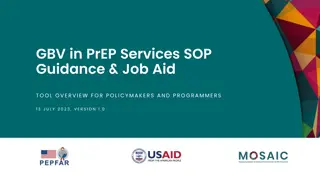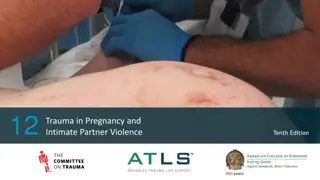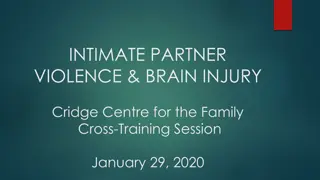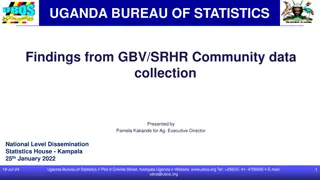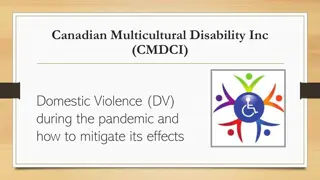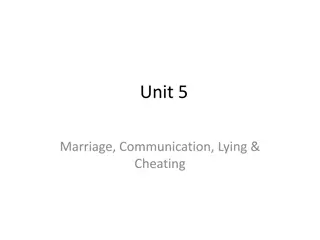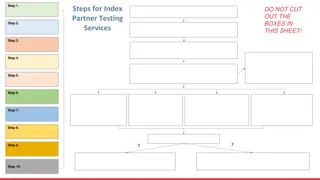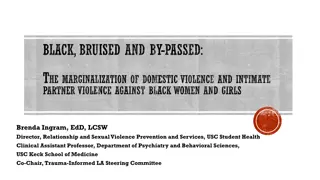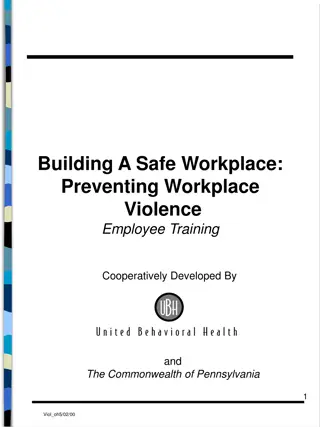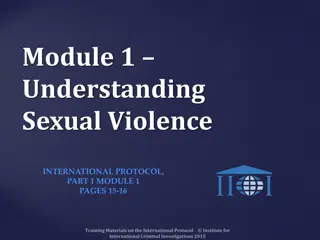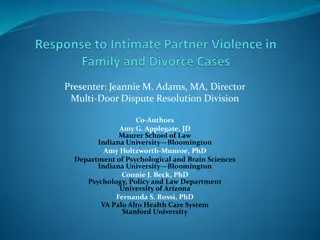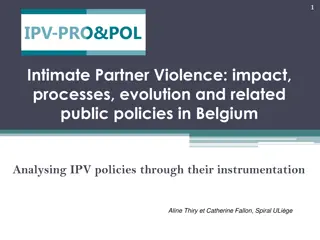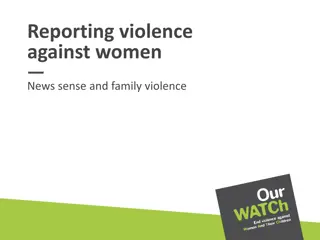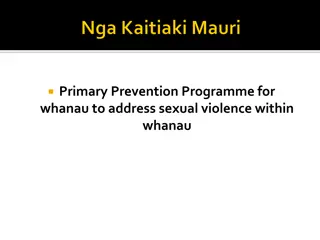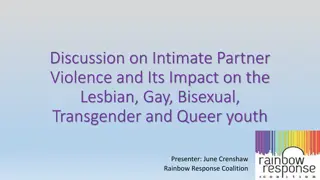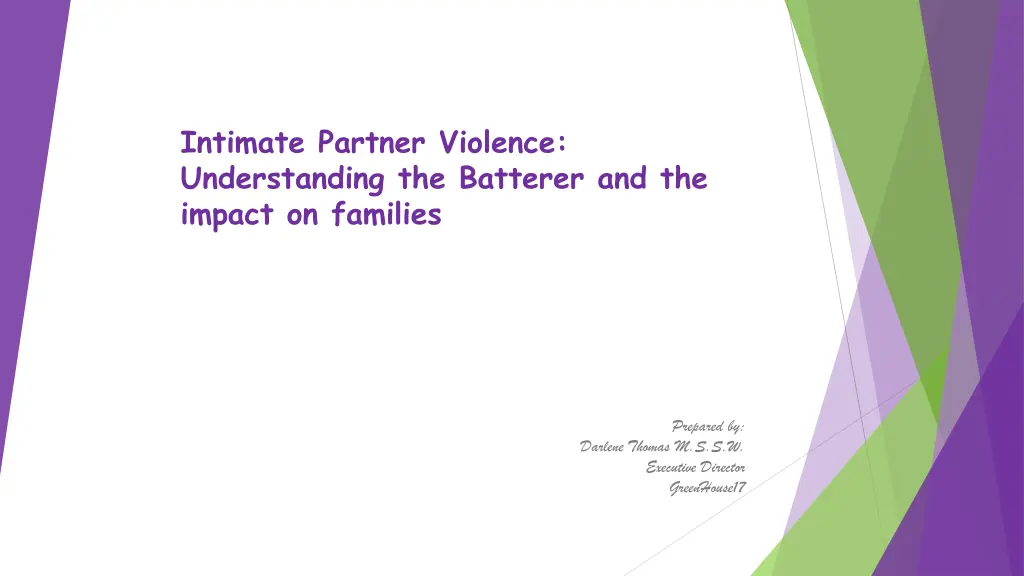
Understanding Intimate Partner Violence and Its Impact
Explore the dynamics of intimate partner violence, including technology-facilitated abuse and assessment questions to recognize signs of abuse. Learn about the behaviors of a batterer and how it affects families. Find out if your partner's actions are considered abusive and controlling.
Download Presentation

Please find below an Image/Link to download the presentation.
The content on the website is provided AS IS for your information and personal use only. It may not be sold, licensed, or shared on other websites without obtaining consent from the author. If you encounter any issues during the download, it is possible that the publisher has removed the file from their server.
You are allowed to download the files provided on this website for personal or commercial use, subject to the condition that they are used lawfully. All files are the property of their respective owners.
The content on the website is provided AS IS for your information and personal use only. It may not be sold, licensed, or shared on other websites without obtaining consent from the author.
E N D
Presentation Transcript
Intimate Partner Violence: Understanding the Batterer and the impact on families Prepared by: Darlene Thomas M.S.S.W. Executive Director GreenHouse17
Technology Facilitated Gender Based Violence Sextortion (blackmail by threatening suxual information, photos, videos Image based abuse, Revenge Porn (sharing intimate photos without consent) Doxxing ( publishing private person information) Cyber bullying, harassment, hate speech. Controlling phone, computer, personal accounts, social media etc. Stalking by monitoring or tracking locations (trackers) and communications to inflict further harm (54% stalkerware, 71% monitored) Continuous calls, threatening texts and communications. Online impersonation/Spoofing/Trolling Alexa listen to private conversations
Assessment Questions Do you: feel afraid of your partner much of the time? avoid certain topics out of fear of angering your partner? feel that you can t do anything right for your partner? believe that you deserve to be hurt or mistreated? wonder if you re the one who is crazy? feel emotionally numb or helpless? believe your partner is tracking you or harassing you via technology?
Does your partner: humiliate or yell at you? criticize you and put you down? treat you so badly that you re embarrassed for your friends or family to see? ignore or put down your opinions or accomplishments? blame you for their own abusive behavior? see you as property or a sex object, rather than as a person?
Does your partner: have a bad and unpredictable temper? hurt you, or threaten to hurt or kill you? threaten to take your children away or harm them? threaten to commit suicide if you leave? force you to have sex? destroy your belongings?
Does your partner: act excessively jealous and possessive? control where you go or what you do? keep you from seeing your friends or family? limit your access to money, the phone, or the car? constantly check up on you?
Profile of Batterers They have a full range of personality types They are difficult to profile They often test well psychologically, frequently better than victims do. Outside acquaintances do not perceive the abuser as abusive and often defend or deny behaviors even when presented with facts. Children and non-offending partner are exposed to behaviors that he hides from others; controlling and manipulative behavior such as not twisting arguments and incidents of abuse, blames others, and the public vs. private image.
Batterers Perception of Self Believes they are the victim View resistance by victim or the children as an act of aggression, being wronged that they must make right. Skilled at convincing others they are the victim. Manipulates incidences or grievances that may lead professionals to conclude that they are the victim or that the relationship is mutually abusive. Most have no psychological problems. Battering is primarily driven by culture rather than individual psychology.
Greatest Predictors are.. Belief that battering is justified. Presence of peers who support abusiveness. These are more important than being exposed to battering as a child. It is a learned behavior linked to how the abuser formulates the concepts of relationship and family. (Lundy Bancroft, 1998)
Batterer Personality Pitbull Insecure, bullying behavior, quick to react with use of forms of violence within the relationship when they perceive they have been disrespected or challenged by their partner. They have an unhealthy dependence on their partner, indicative of the cycle of violence. Use physical and sexual violence more frequently, therefore may be more likely to have a criminal history of intimate partner abuse. Blame others for their behavior
Cobra Methodical and Purposeful in their use of violence Perfectionistic May have been victimized as children Use of tactics to control are a natural part of life. Jacobson and Gottman(1998)
Three Subtypes of Batterers Severity of Marital Violence, Generality of Violence, and Psychopathology/personality disorders. Family-only Those who are generally only violent within the family, levels of physical violence maybe less than the other subtypes. Often only directed toward the intimate partner. May include abuse of the children (directly), children are exposed to the batterers behaviors when not directly the victim) Demonstrate little psychopathology. Difficult for victims to explain to others or feel they will be believed
Character pathology Typically have depression Emotional dependent on their partner Volatile with emotional expressions Often have issues with substance abuse/misuse Generally Violent Exhibit high rates of violence with partner Usually have criminal history, past history of violent acts Anti-social Narcissism May also have substance abuse issues
Risks to Victims Post-Traumatic Stress Disorder/Hostage Syndrome Fear Intimidation Isolation Severe/serious injury Loss of sense of self. Sense of hopelessness Fear of Loss of children (systemic or by batterer) Death (intentionally or accidentally)
Trauma Symptoms Post-traumatic Stress Disorder/Hostage Syndrome Victims of DV and Rape suffer from the same syndrome as survivors of war. Helplessness and isolation are the core experiences of psychological trauma. Traumatic reactions occur when neither resistance nor escape is possible. Stripped of ordinary human adaptations that give people a sense of control, connection, and meaning.
Destroys the sense of self. Persons who have never experienced prolonged terror or trauma presume that they would show greater courage and resistance than the victim in similar circumstances. Therefore, the common tendency is to account for the victim s behavior by seeking flaws in her personality or moral character. Trauma and Recovery, by Judith Lewis Herman, M.D.
Children Exposed to Batterers Research is increasingly clear that children are not passive onlookers, they actively seek to make meaning of their experiences and navigate the situations which confront them. Laing, (2000) Violent and Non-Violence Exposures Violence during pregnancy Injury from attempting to intervene Witnessing injuries, hearing incidents of violence Isolation/Family Secret Emotional, verbal abuse Economic Depravation
Intervention effects (police, rushed upheavals, disruption in schooling, new environments, loss of pets, friends, toys etc.) Younger children understand situations surrounding violence while older children demonstrate the context of intentionality, entitlement and control. Report fear, helplessness, despair, self-blame and depression. Report hiding, intervening, trying to sleep through and caring for younger siblings. They report non-offending parent were able to assist and support them Even after the non-offending parent separated, children were still exposed to abusive behaviors either directly or indirectly. New partners and/or move from periphery to the center of the abusive behaviors.
Lethality/Assessment Factors to consider Children in the home especially children that are not the batterers. Threats to kill the partner in the past- threats to harm children Incidents of strangulation (choking) Availability of a weapon, have weapons ever been used in the past. Recent separation Forced sexual activity Stalking behaviors Legal/illegal substance abuse Employment Has Batterer ever threatened suicide Has victim ever threatened suicide Other forms of coercive control
Danger Assessment Used to try to determine level of danger for being killed by intimate partner. Mostly self-report. It has two sections, one is a 20 question scoring instrument and the other a calendar of occurrences. Tool was designed by Jacquelyn Campbell (1998) is widely accepted and implemented. http://www.dangerassessment.org Has there been a sudden change in pattern or behavior of the batterer?
Safety Planning Identify the problem, each case is unique with it s own set of barriers and resources. Explore reasonable/practical options and choices with the survivor. Discuss barriers and strengths of each option Identify resources and make referrals Help survivor in devising safety plans that are age-appropriate for their children. Help survivor put plans into action Follow-up Types of Safety Plans Techology, leaving, staying, children, planning etc.
KRS 209A: Spousal abuse/neglect - major changes go into effect June 29, 2017 KRS 620: Child dependency/abuse/neglect KRS 209: Vulnerable adult abuse/neglect/exploitation KRS 202A/645: Duty to Warn (only applies to certain professionals) Civil Protections-Interpersonal Protective Orders Criminal options- typically assault, stalking, terroristic threatening, and harassment. Felonies and Misdemeanor in Domestic Violence.
KRS 209 If a professional has reasonable cause to believe that a victim with whom he or she has had a professional interaction has experienced domestic violence and abuse or dating violence and abuse, the professional shall provide the victim with educational materials related to domestic violence and abuse or dating violence and abuse including information about how he or she may access regional domestic violence programs or rape crisis centers and information about how to access protective orders
Physician, osteopathic physician, coroner, medical examiner, medical resident, medical intern, chiropractor, nurse, dentist, optometrist, emergency medical technician, paramedic, licensed mental health professional, therapist, CHFS employee, child care personnel, teacher, school personnel, ordained minister or denominational equivalent, victim advocate or organization/agency employing any such professional
COMMUNITY ACCO UNTA BILITY W H EEL PEOPLE WILL:MEDIA WILL: make peace, justice, and educate the community about equality both feminine and mascu- the epidemic of violence against line virtues. Men will take responsibility to confront other men who indulge in misogynistic behavior and use peer pressure children over profit, popularity and advantage; to stop violence against women and and condemn patriarchal privilege, abuse, children. Both women and men will secrecy, and chauvinism; cease its confront their own biases and the practice of glorifying violence against systems that support male privilege. women and children. FAITH GROUPS WILL: conduct outreach within the congregation regarding domestic violence & provide a safe environment for women to discuss their experiences; develop internal policies for responding to domestic violence; speak out against domestic violence from the pulpit; organize multi-faith coalitions to educate the religious community; actively interact with the existing domestic violence intervention community. women; prioritize safety, equal opportunity, and justice for women and SOCIAL SERVICE PROVIDERS WILL: become social change advocates for battered women; refer batterers to account- able intervention programs; stop blaming their behavior on myths such as drug & alcohol, anger, provocation, loss of control, etc.; design and deliver services that are sensitive to women and children s safety needs; minimize how batterers use them to continue battering their families. EDUCATION SYSTEMS WILL: dialogue with students about violence in their homes, the dynamics of domestic violence, and how it is founded on oppression of women and worship of men; provide a leadership role in research & theoretical develop- ment that prioritizes gender justice, equal opportunity, and peace; intervene in harassment, abuse, violence, adopt a mandatory arrest condition batterers and intimidation of girls / policy for batterers; charge & women in the prosecute them in a manner that remaining nonviolent; actively education doesn t rely on victims involvement; intervene against men s stalking in system. refer batterers exclusively to intervention the workplace; support, financially and programs meeting state or federal standards; otherwise, advocacy and services for never offer delayed or deferred sentence options battered women and children; continually to to batterers; provide easily accessible protection orders & back them up; incar- services, about domestic violence issues. cerate batterers for noncompliance with any aspect of their adjudication. GOVERNMENT WILL PASS LAWS: that define battering by men as criminal behavior without exception; that vigorously and progressively sanction men s battering behavior; that create standards for accountable batterer intervention programs; EMPLOYERS requiring coordinated systems of intervention WILL: in domestic violence; and will provide ample funding to accomplish its continuing employment on goal of eradicating domestic JUSTICE SYSTEM WILL: violence. educate and dialogue, through personnel
References Daniel G. Saunders. 1998, Child Custody and Visitation Decisions in Domestic Violence Cases: Legal Trends, Research Findings, and Recommendations. Washington State Criminal Justice Training Commission, Burien, WA., 2004. Helping Children Affected by Domestic Violence. Bancroft and Silverman. 2002, The Batterer as Parent Dr. Laing, Leslie. 2000, Children, young people and domestic violence Australian Domestic and Family Violence Clearinghouse. Jacobson, N. & Gottman, J. (1998) When Men Batter Women, New York: Simon & Schuster. Holtzworth-Monroe, A. & Stuart, G. (1994) Typologies of Male Batterers: Three subtypes and the differences among them. Psychological Bulletin, 116 (3), 476-497. Kentucky Coalition Against Domestic Violence, HB 209 PowerPoint notes. United Nations, Unric.org NNEDV techsafety.org
Thank You Darlene Thomas dthomas@greenhouse17.org 859.519.1903 Crisis Support 800.544.2022 GreenHouse17.org Follow us on Facebook, Twitter and Instagram

